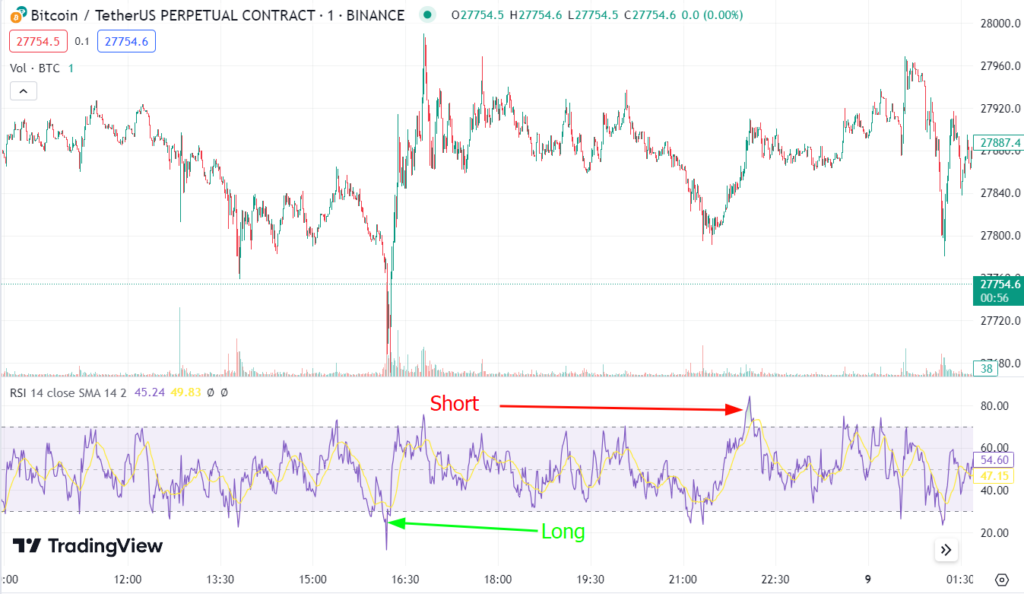RSI and CCI are among the most common oscillators that reflect market trends. For the calculation of indicators in Veles is taken standard value of length RSI 14, and for CCI 20.
So, for example, if the value of RSI exceeds the mark of 70, it is considered that the asset is overbought, expecting a downward correction.
If the indicator value falls below 30, the asset is considered oversold, expecting an upward correction.
The same for CCI, but the levels are at +100 and -100 respectively.
However, assets can be outside the borders of overbought and oversold levels for a long time.
The Veles platform provides the ability to set conditions on indicator values (RSI, CCI filters). For example, RSI < 70 for long will mean that the bot can always enter a trade, except when the asset is clearly overbought.
In general, this allows bots to enter trades very often, excluding only those cases when the asset is in an abnormal overbought/oversold zone.
RSI, CCI levels are indicators that reflect the change of trend. Namely – crossing of the boundaries.
For example, if the value of RSI was 75 and became 65, it means that RSI crossed the border from top to bottom and it is a strong signal to short.
Equally and vice versa, when the RSI value crosses the lower boundary of the channel from bottom to top, it is a strong signal for a long position.

Usually such indicators light up quite rarely, but they reflect a very strong signal.




